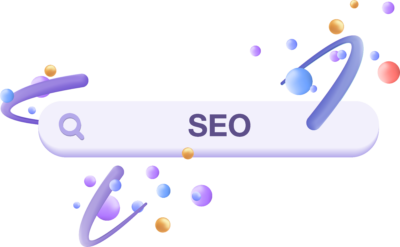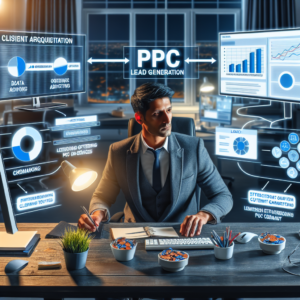
In today’s competitive digital landscape, businesses are continuously seeking effective ways to capture consumer attention and drive growth. The two primary methodologies dominating digital marketing are Search Engine Optimization (SEO) and Pay-Per-Click (PPC) advertising. While both are pivotal in increasing online visibility and driving traffic, they approach these goals differently. Understanding the nuances of SEO and PPC can help businesses make informed decisions about how to allocate their marketing resources for optimal results.
Understanding SEO and PPC
SEO (Search Engine Optimization) is a strategy focused on enhancing a website’s visibility in the organic search results of search engines like Google and Bing. SEO aims to improve the ranking of a site’s pages in search engine results pages (SERPs) through a variety of techniques, including keyword optimization, content creation, and technical improvements.
PPC (Pay-Per-Click) Advertising, in contrast, involves purchasing ad space on search engines and other platforms. Advertisers bid on keywords, and their ads appear in the sponsored sections of SERPs. The cost is incurred each time a user clicks on the ad. PPC offers a more immediate way to drive traffic compared to the gradual nature of SEO.
SEO: The Long-Term Growth Strategy

SEO is a long-term approach that focuses on improving a website’s ranking in organic search results. Although SEO requires patience and consistent effort, it offers several advantages:
Traffic Source: SEO drives organic traffic from search engines, which can lead to a steady flow of visitors over time. Unlike PPC, there is no direct cost per click, making it a cost-effective long-term strategy.
Cost: The cost associated with SEO is indirect, involving investments in time, resources, and expertise. While there are no direct fees for clicks, SEO requires ongoing efforts in content creation, technical optimization, and keyword research.
Traffic Potential: Achieving high rankings through SEO can result in sustained, long-term traffic. However, it typically takes several months of consistent optimization to see tangible results. The effort put into SEO can continue to yield benefits for an extended period.
Visibility: High organic rankings enhance a website’s visibility and credibility. Users often trust organic results more than paid ads, which can contribute to higher engagement and conversion rates. However, gaining these high rankings requires significant time and effort.
Credibility and Trust: Websites that rank highly in organic search results are often perceived as more credible and trustworthy. High organic rankings can improve brand authority and reputation over time.
Targeting: SEO relies on keyword optimization and content marketing to reach relevant audiences. By creating high-quality content around targeted keywords and optimizing on-page elements, businesses can attract users who are searching for specific information or solutions.
Duration: SEO is inherently a long-term strategy. Results improve gradually and can provide lasting benefits if the website continues to be optimized and updated. Unlike PPC, which stops generating traffic once the budget is exhausted, SEO efforts can lead to ongoing visibility.
Control: SEO offers less direct control over when and how a site appears in search results. While you can influence rankings through optimization techniques, factors such as search engine algorithms and competition also play a role.
SEO Strategies include:
- Keyword Research: Identifying relevant keywords that potential customers are searching for and incorporating them into your content.
- Content Marketing: Creating valuable, engaging content that aligns with user search intent and addresses their needs.
- On-Page SEO: Optimizing individual webpages with elements such as meta tags, title tags, header tags, and URL structure.
- Technical SEO: Improving website backend aspects, including site speed, mobile optimization, XML sitemaps, and secure sockets layer (SSL) setup.
- Local SEO: Enhancing visibility for local searches by optimizing Google My Business and local citations.
- Core Web Vitals: Focusing on metrics related to user experience, such as Largest Contentful Paint (LCP), First Input Delay (FID), and Cumulative Layout Shift (CLS).
PPC: The Immediate Traffic Booster

PPC advertising offers a way to gain immediate visibility and traffic through paid ads. This method is particularly useful for businesses seeking quick results and precise targeting. Here’s what you need to know about PPC:
Traffic Source: PPC generates paid traffic via ad clicks. It provides instant visibility at the top of SERPs but requires ongoing financial investment to maintain ad placements.
Cost: The cost of PPC is direct and variable, depending on factors like keyword competition and bid amounts. Advertisers pay each time a user clicks on their ad. The cost can be managed through careful budget allocation and bid strategies.
Traffic Potential: PPC campaigns can deliver immediate traffic boosts and are effective for generating quick results. However, traffic typically ceases when the campaign ends or the budget is exhausted.
Visibility: Ads appear prominently in the sponsored sections of SERPs, often above organic results. This prominent placement can drive significant traffic, but users may view ads as less trustworthy compared to organic listings.
Credibility and Trust: While PPC ads benefit from Google’s endorsement, they are generally perceived as less trustworthy than organic search results. Users often trust organic results more due to their perceived relevance and authority.
Targeting: PPC allows for precise targeting based on various criteria, including keywords, location, device, time of day, and user demographics. This level of targeting enables advertisers to reach specific audience segments effectively.
Duration: PPC provides immediate results but requires ongoing investment to maintain visibility. The effectiveness of PPC campaigns is directly tied to the budget and management of the ad spend.
Control: PPC offers greater control over various aspects of ad campaigns, including ad placement, timing, and audience targeting. Advertisers can adjust bids, create different ad variations, and refine targeting parameters to optimize performance.
PPC Strategies include:
- Keyword Research and Selection: Identifying high-volume and relevant keywords for bidding.
- Ad Creation and Optimization: Crafting compelling ad copy and optimizing headlines, descriptions, and call-to-actions.
- A/B Testing: Testing different ad variations to determine which performs best in terms of engagement and conversions.
- Bid Management: Implementing bid strategies and automation to optimize costs and maximize ROI.
- Targeting and Retargeting: Using detailed customer personas to target specific audiences and retargeting past visitors to increase conversion rates.
- Regular Monitoring and Optimization: Continuously analyzing campaign performance and making adjustments to improve results.
SEO vs PPC: Choosing the Right Strategy
The decision between SEO and PPC doesn’t have to be an either/or proposition. In fact, combining both strategies can yield the best results. Here’s how to approach integrating SEO and PPC:
SEO and PPC Synergy: Combining SEO and PPC allows businesses to leverage the strengths of both methods. SEO provides long-term, sustainable traffic, while PPC offers immediate visibility and quick results. Using both strategies ensures comprehensive coverage and maximizes online presence.
Balanced Approach: Utilize PPC to drive immediate traffic and test various keywords and audience segments. As you gather data and insights, you can refine your SEO strategy to achieve long-term growth and sustained visibility.
Data-Driven Decisions: Analyze data from both SEO and PPC campaigns to inform your overall marketing strategy. Use insights from PPC performance to optimize SEO efforts and vice versa. This data-driven approach helps in making informed decisions and optimizing marketing spend.
Conclusion
In the battle of SEO vs PPC, both strategies play crucial roles in a successful digital marketing plan. SEO offers long-term benefits through organic rankings and credibility, while PPC provides immediate visibility and precise targeting. The most effective approach is often to integrate both strategies into a cohesive plan that balances short-term results with long-term growth.
By leveraging the strengths of both SEO and PPC, businesses can maximize their online presence, drive traffic, and achieve sustainable growth. At Power Digital, we specialize in crafting tailored strategies that harness the power of both SEO and PPC. Through a data-driven approach, we help businesses optimize their digital marketing efforts and achieve lasting success in the competitive online landscape










